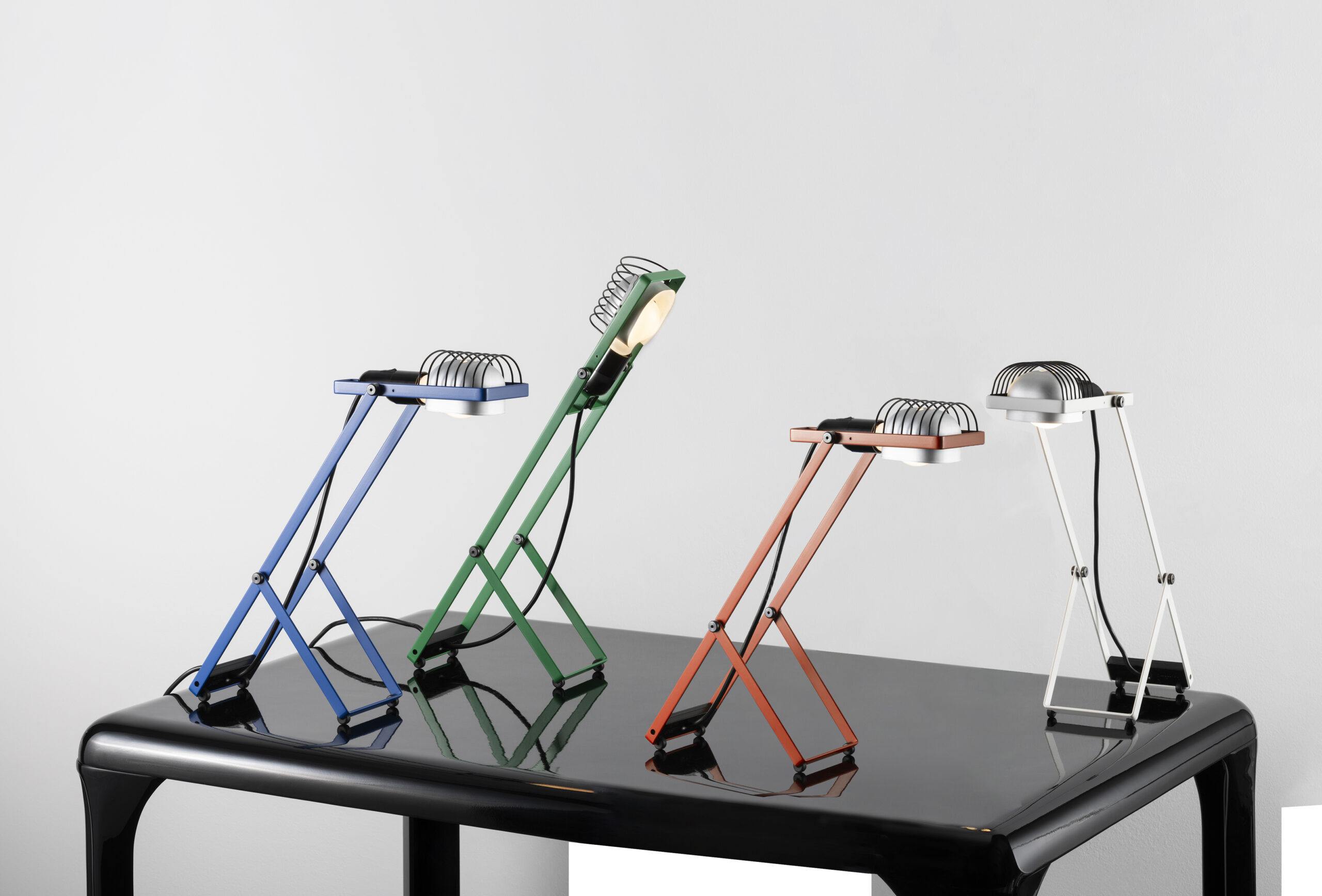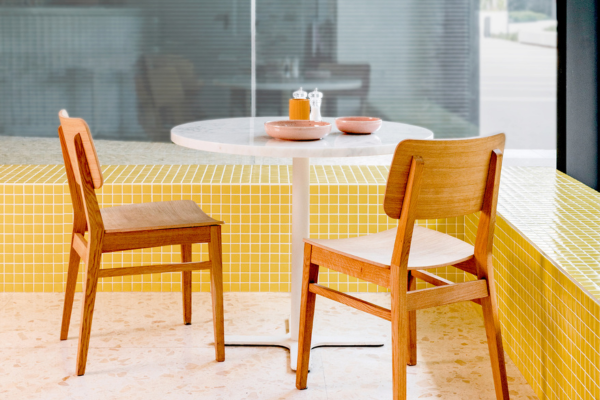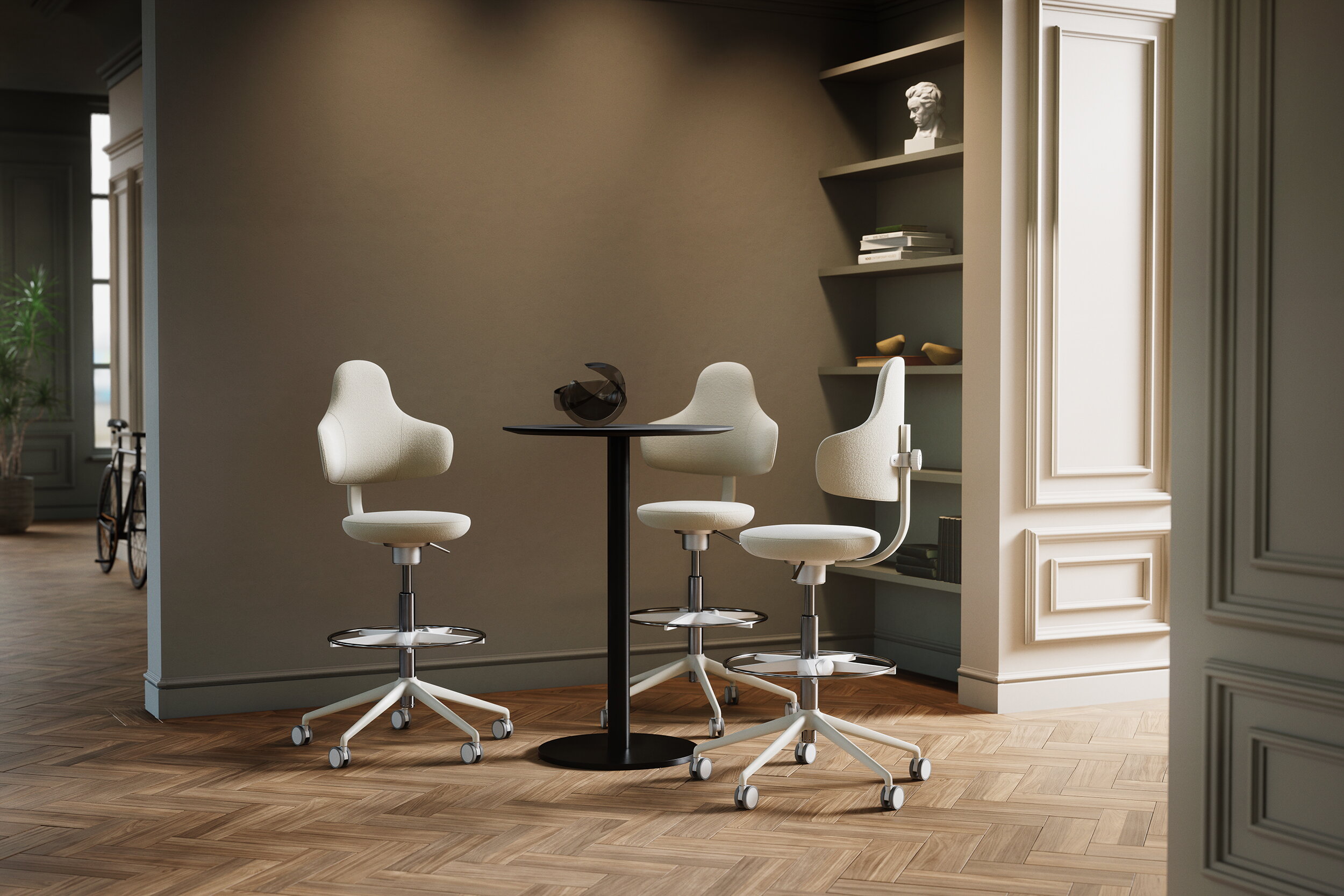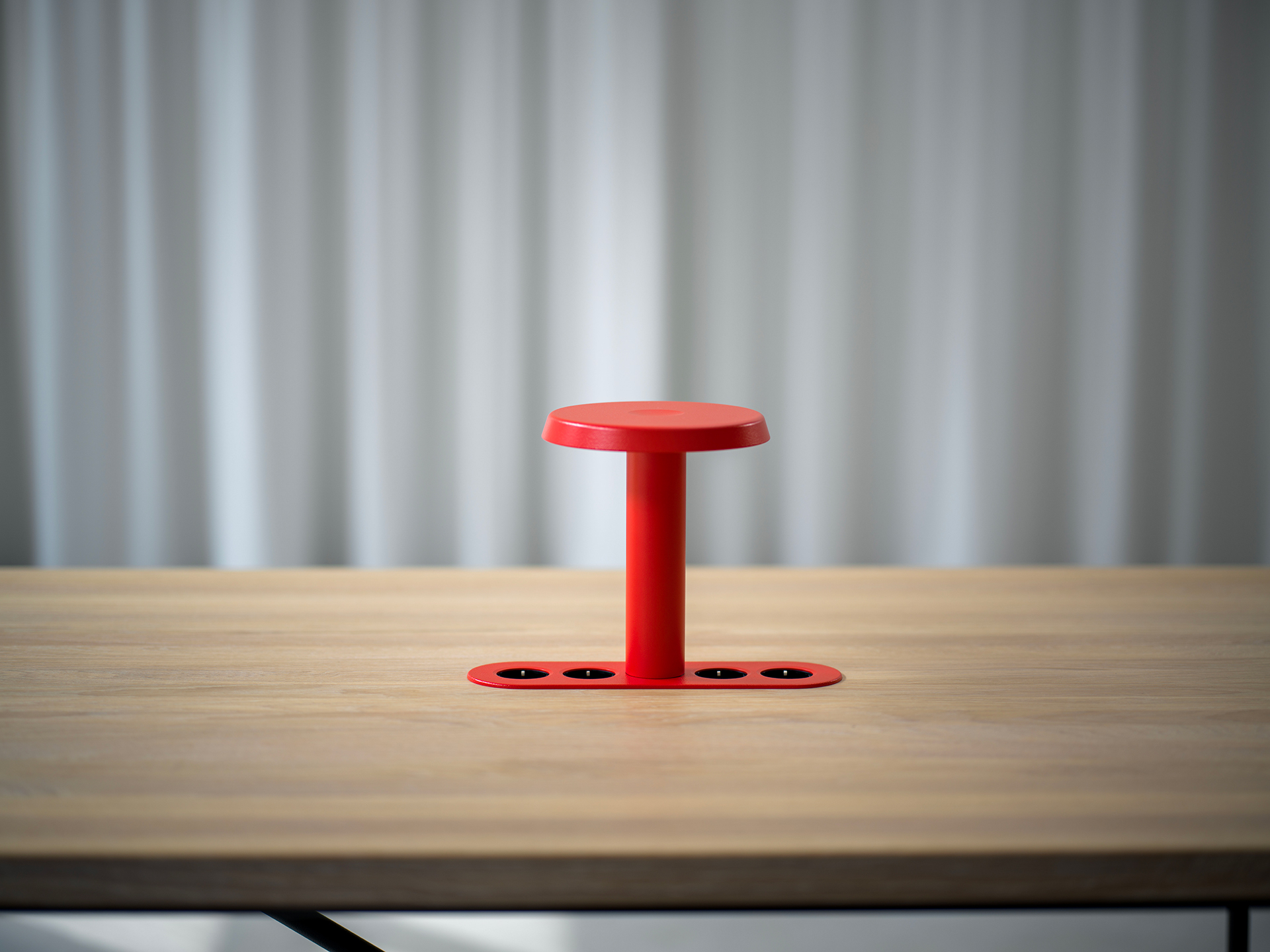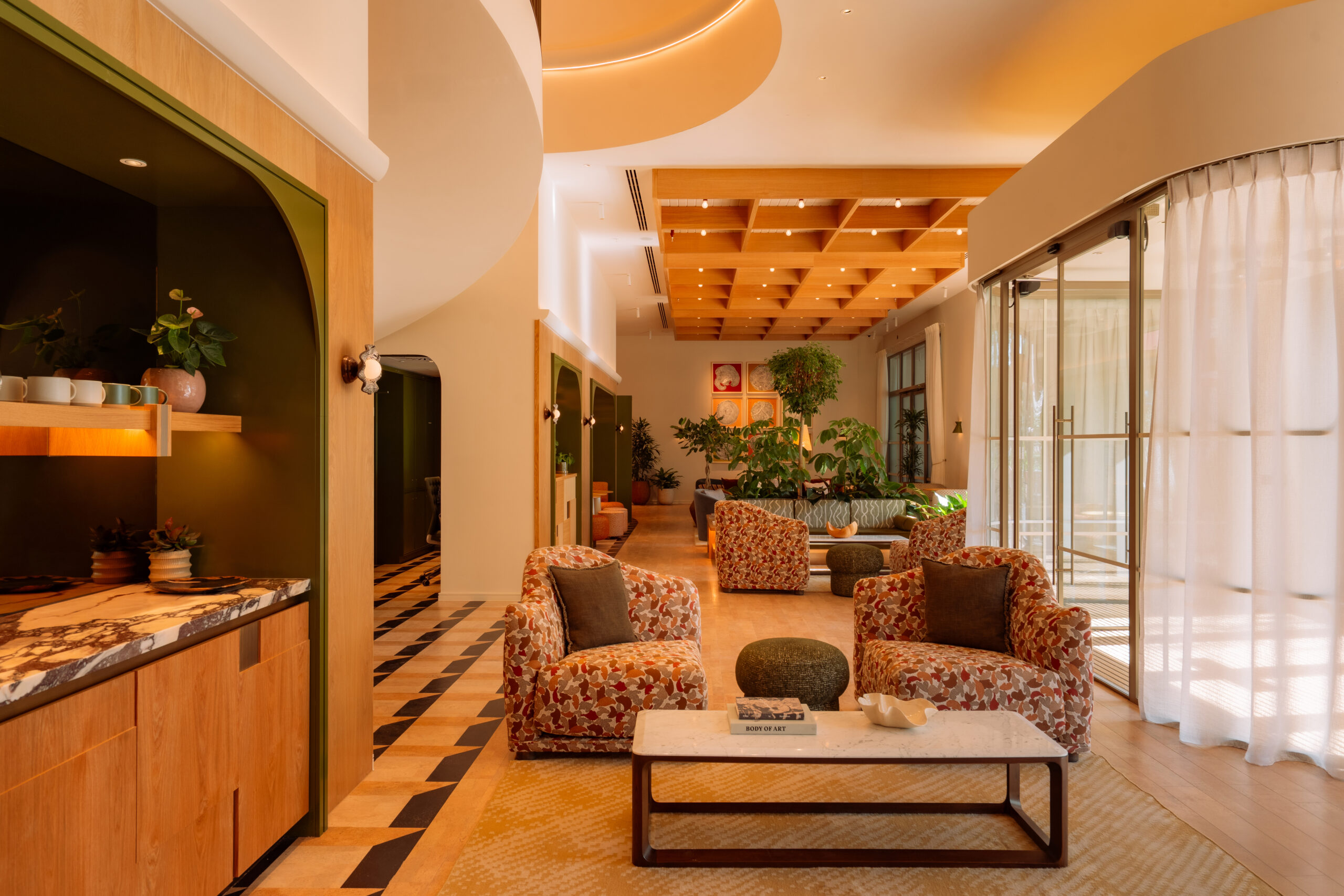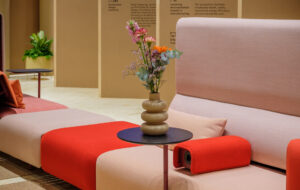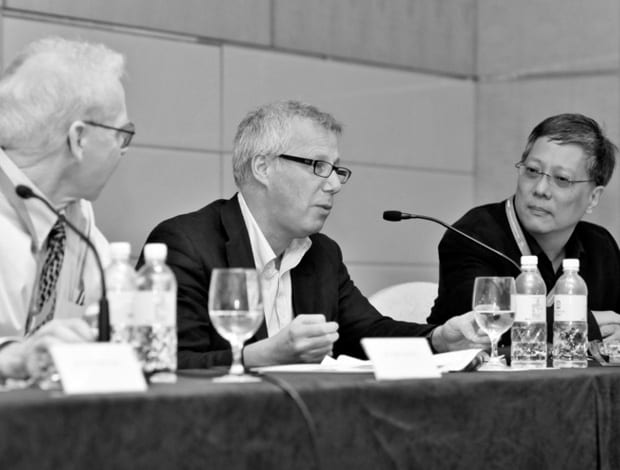 Jeremy Myerson, director of the Helen Hamlyn Centre, launches Welcoming Workplace, a global study into how workplace design may change in the face of an ageing population|Researcher Catherine Greene proposes new ways of working, including this station with its nature-inspired-screen to aid concentration|Further illustrations of Catherine Greene’s research, including a ‘Connector’, one of four types of worker Greene identifies|Researcher Claudia Dutson used these images to analyse how the weather affects the pattern of shadows in a room|A ‘rain curtain’ that works both an as acoustic dampener and humidifier – part of Welcoming Workplace’s vision for the office of the future|Claudia Dutson uses miniature workspaces to explore different qualities of office light, and their affect on people|Catherine Greene, RCA research associate and co-author of the Welcoming Workplace study||
Jeremy Myerson, director of the Helen Hamlyn Centre, launches Welcoming Workplace, a global study into how workplace design may change in the face of an ageing population|Researcher Catherine Greene proposes new ways of working, including this station with its nature-inspired-screen to aid concentration|Further illustrations of Catherine Greene’s research, including a ‘Connector’, one of four types of worker Greene identifies|Researcher Claudia Dutson used these images to analyse how the weather affects the pattern of shadows in a room|A ‘rain curtain’ that works both an as acoustic dampener and humidifier – part of Welcoming Workplace’s vision for the office of the future|Claudia Dutson uses miniature workspaces to explore different qualities of office light, and their affect on people|Catherine Greene, RCA research associate and co-author of the Welcoming Workplace study||
With the average age of the workforce on the rise, the office of the future will be much more multi-generational. Rachel Calton visited the RCA’s Helen Hamlyn Centre to find out how the workplace will fit this changing demographic
The Royal College of Art’s Helen Hamlyn Centre celebrated its ten-year anniversary during this year’s London Design Festival. This bedrock of inclusive, people-centred design rests largely upon its early focus – research into population ageing – but it is also at the forefront of research and practice in rethinking workplace design. And it is only after a decade of talking about the importance of an ageing workforce on workplace design that people are slowly beginning to listen to what the centre has to say.
In a climate where the role of design in social and economic progress is firmly in vogue, a lot of time now goes into predicting technological developments as drivers of change, and how new technology will shape the future of workplace design.
The Helen Hamlyn Centre’s professor of design, Jeremy Myerson, admits that this is “a very tricky phenomena to determine,” but what we can reliably forecast, however, is demographic change.
“We know the population is ageing; that the percentage of young people to old is shrinking, and we know the pension crisis that awaits us,” says Myerson. “People are not paying off mortgages, and there is a serious debate about raising the retirement age.”
Along with growing emphasis on the value of older workers in a progressively more knowledge-based economy, all trends indicate that people will be remaining in the workplace longer, whether on a full time, part-time, or on a consultancy basis. However, the last thing Myerson wants to do is to develop a workplace design language that singles out or stigmatises mature workers, or that detracts from style in design.
The Helen Hamlyn Centre recently concluded a global study that addresses how office environments might be rethought to enable growing numbers of older people to participate in the so-called ‘knowledge economy’.
The project, entitled Welcoming Workplace, carries recommendations addressing issues of furniture, lighting and acoustics, to reduce fatigue and improve concentration among workers – measures that should make the workplace more welcoming for everyone within it.
Welcoming Workplace was funded as part of the centre’s Designing for the 21st Century initiative, and was carried out with academic partners in Japan and Australia. An accompanying book of the same name, released next spring, is discursive in nature, and is illustrated by Financial Times cartoonist Roger Beale.
“Just getting people to understand the demographic of the workplace is important,” says Myerson of the book. The study has resulted in design guidance for RIBA and the BCO, and evidence from the study was also submitted to the Department of Work and Pensions, but Myerson also wants it to reach managers, chief executives and HR departments as well as designers and policy makers.
Whereas the term ‘knowledge worker’ has become a buzzword within the world of the workplace right now, the phrase ‘ageing population’ does not sound so snappy. Both trends carry pertinence however, and share many of the same concerns. ‘Knowledge worker’ is not a term reserved for academics, lawyers and analysts: with an increase in qualified graduates in the economy, it is lab technicians, software designers, financial analysts and service providers.
“When talking about an ageing population, it’s important to remember the new old is not like the old old,” says Myerson. “It’s not the baby boomers – it’s a mobile, healthy generation, used to media, and used to good design.” This is partly self-reflexive: Myerson is campaigning for a generation of knowledge workers in their prime, who, in the next decade, will be facing (the current) retirement age.
“Just getting people to understand the demographic of the workplace is important”
Myerson’s workplace at the Helen Hamlyn Centre, adjacent to the Royal College of Art and opposite Kensington Gardens, is modest, light, calm and welcoming. His cellular office has space to work, space to sit and space to talk, as well as a computer, which he frequently jumps to as a visual aid, pulling up population graphs, graphics from the new book and animated examples of the latest lighting and acoustic innovations.
There are resources to make appointments and coffee. It’s functional, design-conscious and contemporary, with room to concentrate or collaborate, and it also actively represents the type of workplace that Myerson supports – a type of workplace that might be seen as at odds with a wider climate that is intent on the merits of blanket open plan design.
“Through the research what we discovered is that although workplaces are designed to facilitate brainstorming, collaboration and teamwork, in the knowledge economy, 60 per cent of work involves concentration, consideration and research,” says Myerson. “So much emphasis has been put on open-plan, the pendulum may be swinging. Simple things like stricter protocols around silence are called for.”
“When talking about an ageing population, it’s important to remember the new old is not like the old old”
After examining what people have to do during a working day, there are three types of space needed for the knowledge worker, Myerson claims: concentration space, collaboration space and contemplation space. “Additions like rest furniture, to lie down, clear the mind and recuperate can make all the difference. Technology is available to allow people to tailor, modify, and personalise environments – it needs to be utilised.”
Some of the experiments, to do with lighting levels and sound transformation technology, tested ground-breaking sound-dampening and sound-cancellation techniques, with products such as a ‘rain curtain’, a wall of falling water that softens the acoustics and humidifies the air within a workspace.
Catherine Greene, RCA research associate and co-author of Welcoming Workplace, has this year partnered with Austrian workplace furniture company Bene to continue her research into practical solutions to the issues identified in the original study.
In her project, Space for Thought: Designing for Knowledge Workers, she identifies four knowledge-worker typologies: the Anchor, who is desk-based; the Connector, who moves around within the building; the Gatherer, who is often outside the office; and the Navigator, often a consultant, who travels afar. All reported difficulty in reading, learning and analytical tasks in the workplace.
“I didn’t expressly base the project around ageing knowledge workers, because the results of the first study showed these complaints to be universal to all ages,” Greene explains.
Her exemplar layout, to accommodate all four typologies, includes private digital portals, luxury hot-desking for those not permanently based in the building, nature-inspired screens to aid concentration, and adaptable tables to facilitate impromptu meetings and project work. Exhibited at Vienna Design Week in October, her ideas will form part of Bene’s market strategy and product development, and will be displayed at the WorkTech London conference on 23 November.
Another industry engagement project, carried out by research associate Claudia Dutson in partnership with low-energy lighting specialists Megaman, found new ways of looking at lighting in the workplace. Dutson’s study, Light Volumes, Dark Matters: Patterns of Sustainable Lighting, examines the effect of lighting on individual productivity and stress levels.
Test trials with companies such as Arup looked at light’s influence on physiological conditions such as circadian rhythm and the release of the stress hormone cortisol. It also looked at the effect of blue or yellow light on levels of melatonin, and the beneficial effects of lowering ambient light and supplementing it with task lighting.
After a second year of testing low-energy light sources in a variety of ways, a publication will be produced, challenging the current practice in commercial lighting. The workplace was not the only area under scrutiny at the RCA’s recent series of Close Up presentations: cars, mobile phones and crockery were all put under the microscope to see how they could be adapted for the more mature user.
Ageing, it seems, is now firmly, finally on the design agenda. Since one in two adults in the EU will be over 50 by 2020, and 60 is already the new 40, it is about time.


